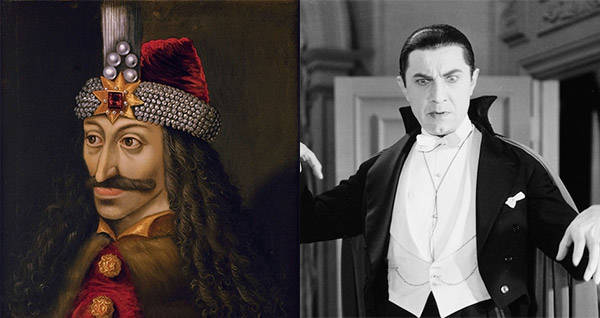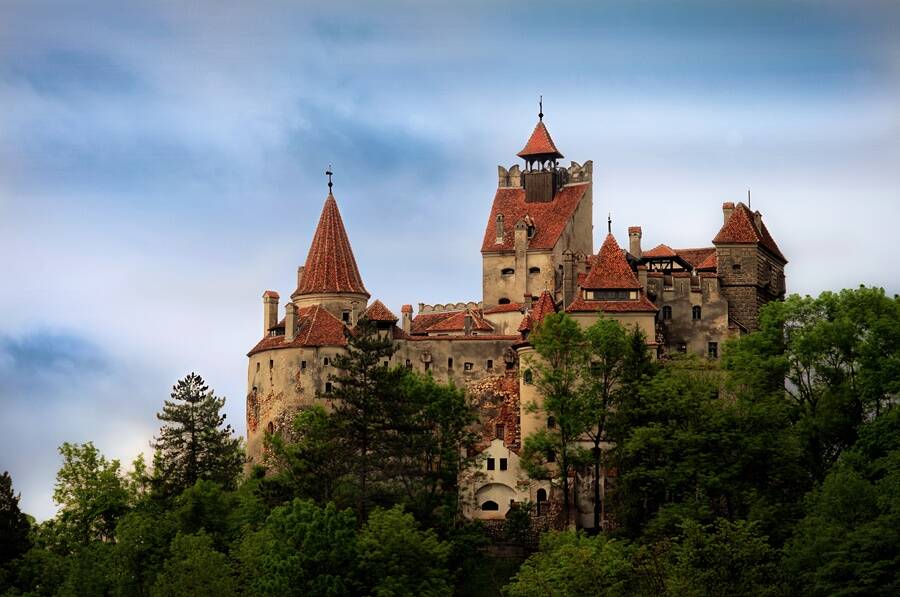The World Behind Dracula: Romanian Dracula Tourism
It’s fair to say that people love to escape reality. Whether in a world of their own, or perhaps something a little more exquisite, there are two very distinct options for individuals looking for a way to free their minds: reading and travel. Throughout time there have been several examples of when the two worlds of reading and travel combine, but none quite like that of Dracula.
A novel by Bram Stoker in 1897, Dracula bases the home of Count Dracula in Transylvania, a region of Romania. Originally inspired by Wallachian prince, Vlad III, also known as Vlad the Impaler for his habit of beheading his enemies, Bram Stoker was fascinated by Romania’s history, despite having never visited in person (3). With the novel fueling countless television shows, movies, and novels, tourism in Romania has greatly increased, much to the dismay of its locals.
 |
| Depiction of Vlad III (left) next to a 1931 theatrical Count Dracula (right) (1). |
Bran Castle, perhaps one of the most infamous tourist attractions, was originally constructed in 1388 and was used as a lookout point against the Ottoman Empire while overlooking the Moeciu Valley. In 1459, Vlad III’s soldiers passed by the castle on his way to settle disputes between Wallachians and Saxons. Bran Castle stood the test of time through war, being passed down between members of royalty, used as a summer home, a hospital, and museum before restoration began in 1987 and finished for tourism purposes (3). Bran Castle is well-known for having inspired Bram Stoker for what would become the castle used in his novel, Dracula.
 |
| The renowned Bran Castle (1). |
A multitude of options exist for tourists interested in both the real and fictional Dracula. For those interested in Vlad the Impaler, people can visit many locations such as Curtea de Arges, what used to be the Wallachian capital where Vlad III was a military commander, or the preserved city of Sighisoara, in which Vlad III was born. Other tourist activities include tours beginning in various towns such as Bucharest, through Bran Castle, and into the city of Brasov, where people are able to enjoy traditional Romanian food and enjoy other aspects of the culture and atmosphere (3).
Bram Stoker in using Transylvania in Dracula, subsequently made Romania the only nation in which has the capability of offering a full tourist Dracula experience (4). Both private and governmental agencies have worked to develop upon tourism possibilities within Romania, allowing revenues of over $2,900,000 to be collected just from Bran Castle tourism alone (5). Although a controversial topic, Romanian cities welcome tourists for economic reasons, and often choose to embrace the rich heritage of their nation’s history over the gory, horror-related culture popularized by Stoker (2). In the end, regardless of how one may view Dracula or Vlad the Impaler, it is important that the historical culture of Romania is preserved for all to enjoy, history buffs and vampire-obsessed alike, for all to enjoy in the future.
Works Cited
1.) All That's Interesting. “Vlad The Impaler Was A Notoriously Blood-Thirsty War Lord - And The Precursor To Count Dracula.” All That's Interesting, All That's Interesting, 16 Jan. 2020, allthatsinteresting.com/vlad-the-impaler.
2.) “Dracula Tourism: The Impact on Romania's Image.” Dracula Tourism: The Impact on Romania's Image | USC Center on Public Diplomacy, 2017, www.uscpublicdiplomacy.org/story/dracula-tourism-impact-romanias-image.
3.) “Historical Timeline // 1211 - 2009.” Historical Timeline - Bran Castle, BRAN CASTLE, 2013, www.bran-castle.com/historical-timeline.html.
4.) Johanson, Mark. “Romania's Dracula Problem: Tourists Love It, Locals Hate It.” International Business Times, 17 July 2013, www.ibtimes.com/romanias-dracula-problem-tourists-love-it-locals-hate-it-1348883.
5.) Marica, Irina. “More Tourists Attracted by Dracula's Myth: Romania's Bran Castle Records Higher Revenues in 2014.” Romania Insider, 6 July 2015, www.romania-insider.com/more-tourists-attracted-by-draculas-myth-romanias-bran-castle-records-higher-revenues-in-2014.
I think it would be so awesome to go to Transylvania myself after reading Dracula. Part of the reason is because the novel is fiction, it's hard to believe that the houses and castles Bram Stoker talks about are probably real and somewhere out there! Just to have the image of the novel that you made up in your head become a reality in front of your eyes is probably one of the best experience for a book lover.
ReplyDeleteI never knew that Bram Stoker himself had never been to Romania. It's interesting that he chose to have the novel in a historically vampire-associated country. Having been to Eastern and Central Europe, I had thought it would be an amazing experience to visit the Dracula Castle because I saw some similar architecture. The castle reminds me somewhat of cathedrals in the Ukraine, and I'm sure it looks even better in person. I also found out there is a virtual tour of Bran Castle with a section on the myth of Count Dracula, so it would be interesting to check that out.
ReplyDeleteGreat job on your blog!
Wow! Reading this post makes me want to visit Transylvania myself. I never knew all the history behind the location Bram Stoker chose for his novel. I enjoyed learning that Vlad III seemed a little mad himself, similarly to Dracula. I wonder if this location played a part in any other of Stoker's novels.
ReplyDelete